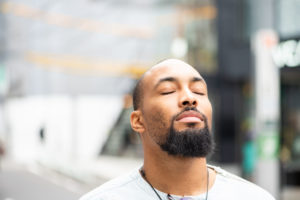Seasonal Affective Disorder (SAD)

When the days get shorter, darker and colder, you may feel a dip in your mood. It’s common to feel affected by changes in the weather and seasons – we all have certain times of year that we enjoy more or less than others, for a variety of reasons. You might find your mood changes when the weather gets colder or warmer, or notice changes in your energy levels, sleeping patterns or eating habits. If these feelings are interfering with your day-to-day life, it could be a sign that you have depression. And if they keep coming back at the same time of the year, it might be a sign that you have seasonal affective disorder (SAD) otherwise known as ‘seasonal depression’.
What is SAD?
Seasonal affective disorder is a type of depression that comes and goes in a seasonal pattern. SAD is sometimes known as ‘winter depression’ or ‘winter blues’ because the symptoms are usually more apparent and severe during the winter. Some people with SAD may have symptoms during the summer and feel better during the winter.
What are the symptoms?
Symptoms of SAD can include:
• a persistent low mood
• a loss of pleasure or interest in everyday activities
• irritability
• feelings of despair, guilt and worthlessness
• feeling lethargic (lacking in energy) and sleepy during the day
• sleeping for longer than normal and finding it hard to get up in the morning
• craving carbohydrates and gaining weight
For some people, these symptoms can have a significant impact on their day-to-day activities.
How can I treat the symptoms?
There are some things you can do yourself to improve your mood during winter SAD.
• Get natural sunlight. Get outside in the natural light as much as possible as it can help boost your mood or sit next to the window to let sunlight in.
• Stay active. Regular exercise can help with symptoms of low mood and depression as it releases serotonin and endorphins.
• Connect with others. Winter can make us feel more isolated than usual so make time to connect with others through a phone call, email, text or meet up face-to-face.
• Have things to look forward to. Whether it’s a coffee with a friend, or the thought of spring coming, try to keep positive by having something to look forward to.
• Pick up a new hobby. If winter means you tend to stay indoors more, keeping busy with new hobbies can help keep your mind active. Why not pick up a book and read or learn how to knit?
• Get cosy. Embrace the cold by getting into warm, comfy PJs and enjoying a hot cuppa and take in the warmth. Remember, the cold won’t last forever!
What causes SAD?
Causes of SAD isn’t fully understood however it’s often linked to reduced exposure to sunlight during the shorter autumn and winter days. There is some evidence to suggest the following:
• increase in the body’s level of melatonin, a hormone that regulates the sleepwake cycle. This makes people feel sleepier and more lethargic.
• irregular production of serotonin, the neurotransmitter that influences mood and,
• less production of Vitamin D, which is needed for the production of serotonin.
If it doesn’t get better…
You should consider seeing your GP if you’re struggling to cope. Your GP will carry out an assessment by asking you questions about your mood, lifestyle, eating habits and sleeping patterns, plus any changes in your thoughts and behaviours. After the assessment, your GP will recommend the most suitable treatment programme for you.
The main types of treatments are:
• Lifestyle measures – including getting as much natural sunlight as possible such as a brief lunchtime walk, exercising regularly and managing your stress levels
• Light therapy – using a special lamp called a light box, which gives off a strong white or blue light, this simulates exposure to sunlight.
• Antidepressant medication
• Talking therapies – such as cognitive behavioural therapy (CBT) or counselling.
For additional support with your mental health, you can refer to the Community Living Well service here.
Author: Michelle Jackson
Posted on: 18th October 2023



